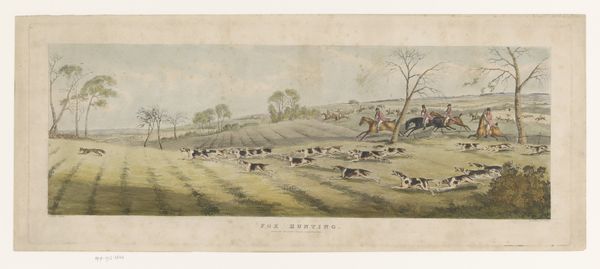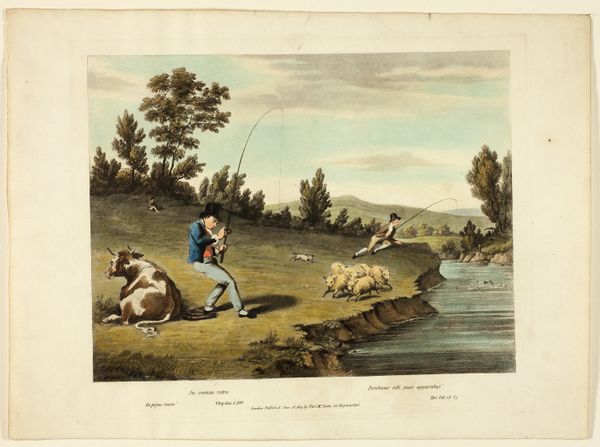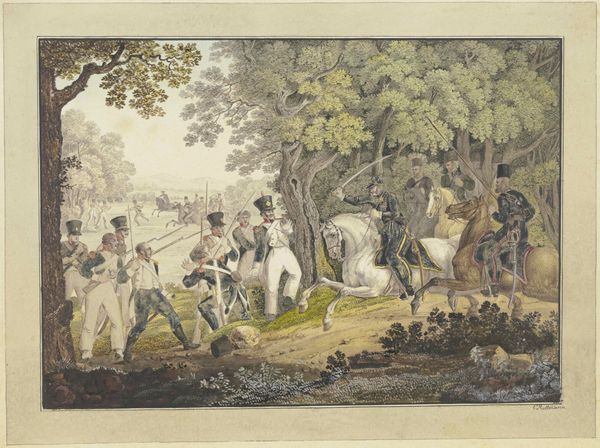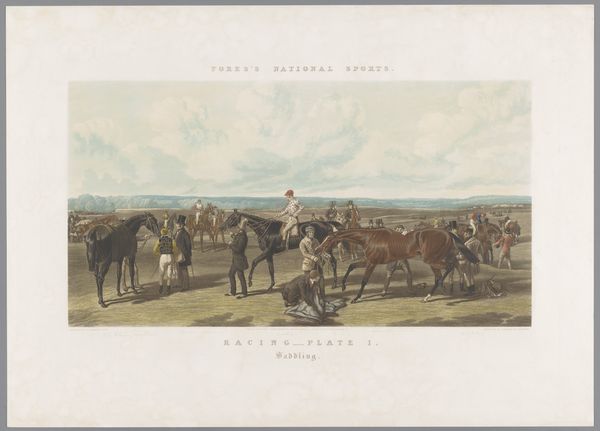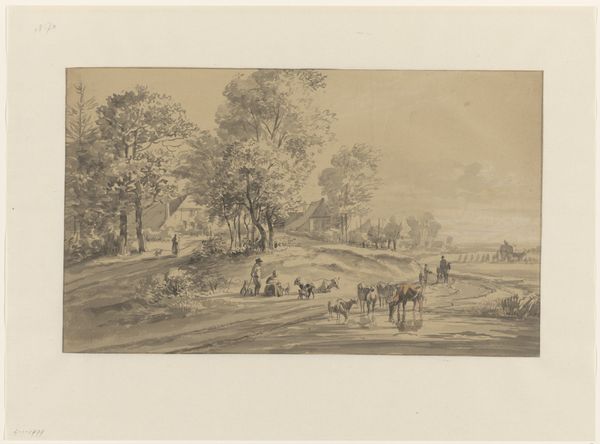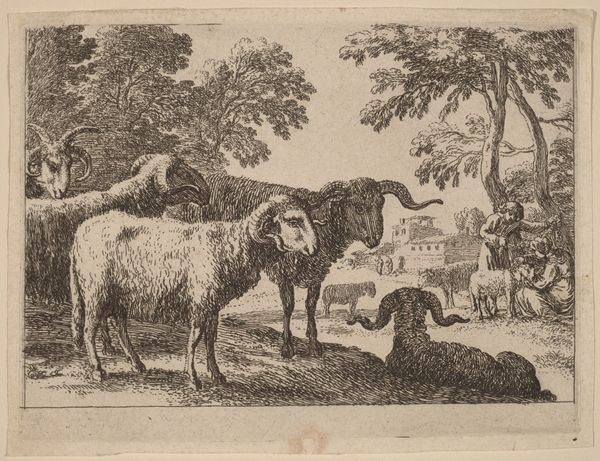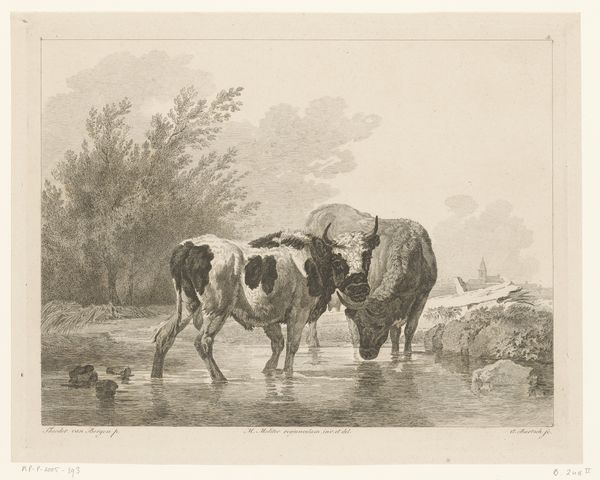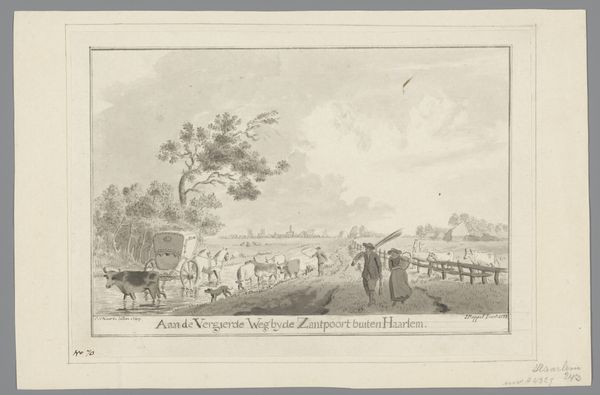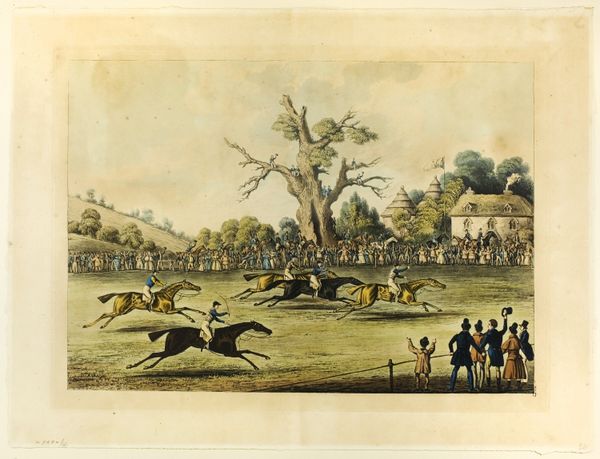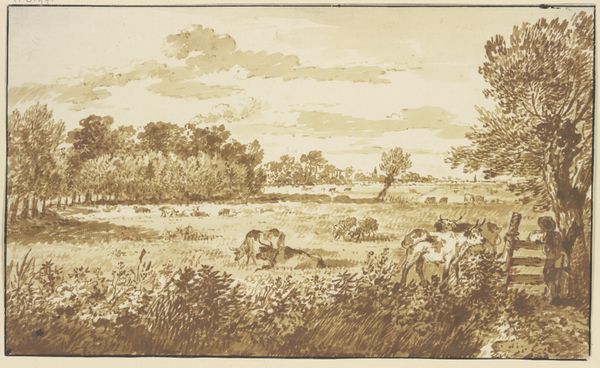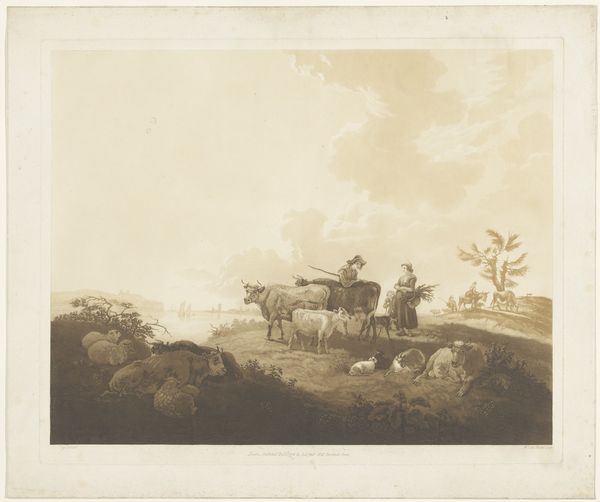
plein-air, watercolor
#
water colours
#
narrative-art
#
plein-air
#
landscape
#
watercolor
#
romanticism
#
genre-painting
#
watercolor
Dimensions: height 277 mm, width 688 mm
Copyright: Rijks Museum: Open Domain
Curator: This watercolor from 1841, titled "Meute beagles jaagt op een haas," attributed to Thomas Sutherland, bursts with kinetic energy. What's your initial impression? Editor: Chaotic elegance, maybe? There’s an undeniable flurry of motion, but the restricted palette, those muted greens and browns, reins it in. It seems meticulously staged in terms of its making, almost like a play set for wealthy owners of hounds. Curator: Indeed. The repetition of the dogs, the rhythm of their strides... it speaks to the ritual of the hunt. Hunting scenes often symbolized power, the elite’s dominion over nature and, by extension, society. Editor: I wonder about the labour. Watercolors were quicker to produce and relatively easily replicable as prints. So who made this image? And for what audience? The clean lines and efficient use of materials indicate the artist probably made other hunting scene prints, given the level of expertise, the economy of line. Curator: It is interesting you raise that point, this reflects Romanticism, too, I feel. While showing a seemingly idyllic, rural scene, the very act depicted hints at a disruption of natural order, which elicits strong feelings among audiences over time, both for and against the elite landowners engaging in bloodsports. Editor: The artist creates an industry, or perhaps is simply an artisan fulfilling his patrons’ needs, a skilled manufacturer creating consumable images, and therefore memories. I'm also intrigued by how the relatively loose application of watercolor gives a real sense of movement. Curator: I see layers here, too. Not just the physical layers of paint on paper, but symbolic ones as well. The hare itself, small and vulnerable, represents perhaps innocence and fragility versus brute strength and the predetermined cycle of fate. Editor: Considering its medium, the portability of the resulting art suggests it's not only an image for the manor house but a transferable record, maybe circulated among participants and kept, reflecting back at themselves. The hunt immortalized. Curator: The chase depicted in full flow captured with great precision; the eye really is led to the back of the composition with the additional riders on the ridge line! The encoding, both in symbolism and in labor, truly shapes our modern perceptions. Editor: Well said.
Comments
No comments
Be the first to comment and join the conversation on the ultimate creative platform.
